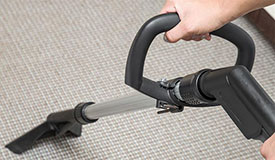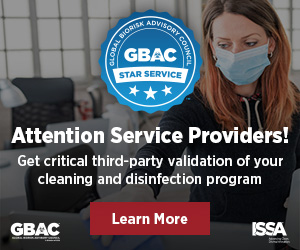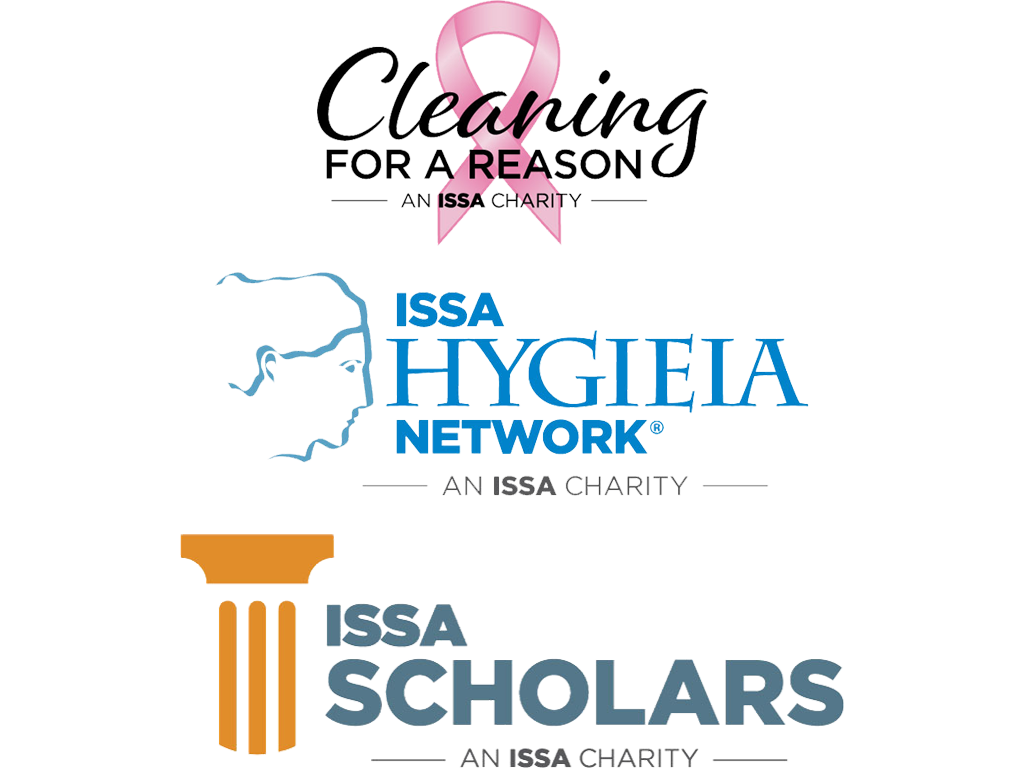Articles
Keep Commercial Carpeting Looking Its Best
Categories: Cleaning Applications
By Larry Lawton | December 10, 2017 << Back to Articles
Accessible by: anyone
Office buildings, schools, hospitals, retail outlets, and other commercial properties experience a large amount of foot traffic. With the traffic comes tracked-in dirt that soils the carpet and creates an unhealthy environment. As a cleaning professional, you need to know exactly how to clean carpets and how often to clean them. Follow these best practices for cleaning a commercial carpet to preserve its natural appearance and extend its life.
Cleaning Frequency
A common belief holds that professionally cleaning a carpet too often will shorten its lifespan and destroy its natural appearance. Thus, building managers tend to wait to clean the carpet until it’s absolutely necessary. The truth is that properly cleaning a carpet with greater frequency will help it retain its beauty and give it longer life.
In high-traffic areas such as main entries, main hallways, classrooms, or administrative offices, do the following:
- Vacuum traffic areas daily and nontraffic areas 1-2 times per week.
- Spot clean daily. If you notice a spot on the carpet, spot clean it immediately.
- Interim clean soil traps 2-24 times annually.
- Restorative clean only when needed.
Vacuuming
Vacuuming is by far the most effective means of keeping a carpet clean. Since most debris tracked into a building is loose and dry, up to 95 percent of soil in carpet can be removed using a clean-air commercial vacuum. The type of vacuum cleaner you use will depend on both the type of carpet and the total area of the room. For larger rooms, a wide-area vacuum or backpack vacuum is your best option. No matter what type of vacuum you use, it should be powerful enough to lift the dirt off the carpet in just one pass. Always select a vacuum with the Carpet & Rug Institute (CRI) seal of approval.
When vacuuming a carpet:
- Slow down. The slower you move the vacuum, the more dirt you will collect in fewer passes.
- Alternate the direction of the vacuum. This will pick up dirt from various angles.
- If your vacuum has a height adjustment, ensure it is adjusted properly.
- Never allow the bag to get more than one-third full.
Cleaning Methods
The remaining 5 percent of carpet soil is wet, oily, or sticky. For the same reasons we use a mild soap or detergent to remove these types of soils from our bodies, we also use them to clean carpet. The key is to remove these soils from the carpet frequently.
There are two ways to clean a carpet: interim cleaning and restorative cleaning. Let’s explore each a little more closely.
Interim cleaning is the process of emptying soil traps or traffic areas on a scheduled basis rather than waiting for the carpet to become impacted with soil. The interim cleaning process requires less water and less detergent, so the carpets dry faster. As a result, there are minimal allergens in the carpet. As many people are allergic to chemicals, the interim process of cleaning may be a healthier option. Although interim cleaning is performed more frequently, the process is much quicker.
An additional benefit to interim cleaning is that you maintain a higher level of appearance year-round. The most common methods of interim cleaning accepted by carpet manufacturers and CRI are dry extraction; encapsulation brush cleaning; and fast, low-moisture extraction.
Deep restorative cleaning is the process of restoring a neglected and soil-impacted carpet. Carpets today are designed to hide 7-15 times their own weight in soil. Follow these steps to properly restore a carpet in this condition:
- Pile-lift the carpet to remove as much of the dry soil possible.
- Dry-extract the carpet with a professional carpet scrubber extractor or wet-extract with a CRI-approved hot water extractor.
- Dry the carpet as quickly as possible to prevent the proliferation of allergens. Try to get the carpets dry in 2-4 hours using the HVAC system, fans, and dehumidifiers.
Whether you choose to do interim cleaning or deep restorative cleaning, we recommend the use of green-certified carpet cleaning products that meet the carpet mill’s warranty specifications.
About the Author.
Larry Lawton is vice president of Lawton Brothers, a leading distributor of janitorial and sanitary supplies, cleaning equipment, chemicals, paper, and liners. He can be reached at [email protected].



